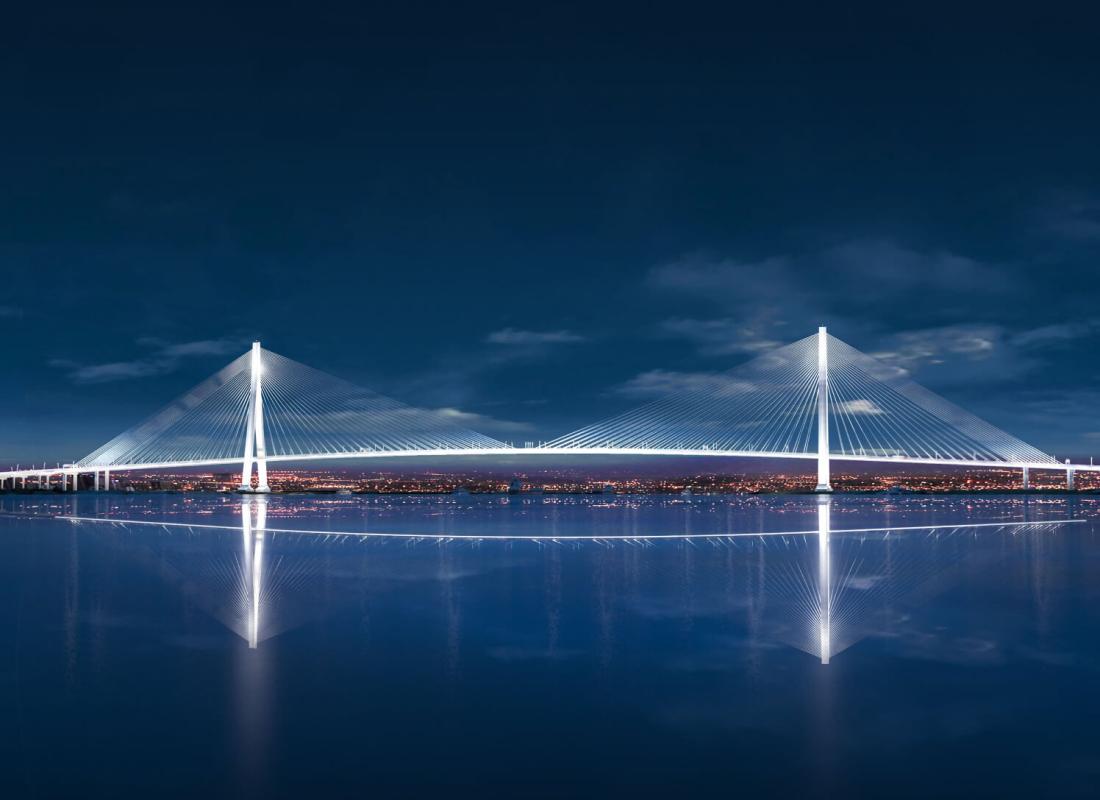The construction of any large infrastructure project, especially one which spans an international border, is no easy task. It takes years of study and planning before the first shovel can go into the ground. Learn about how the Gordie Howe International Bridge project started and the key milestones along the way.
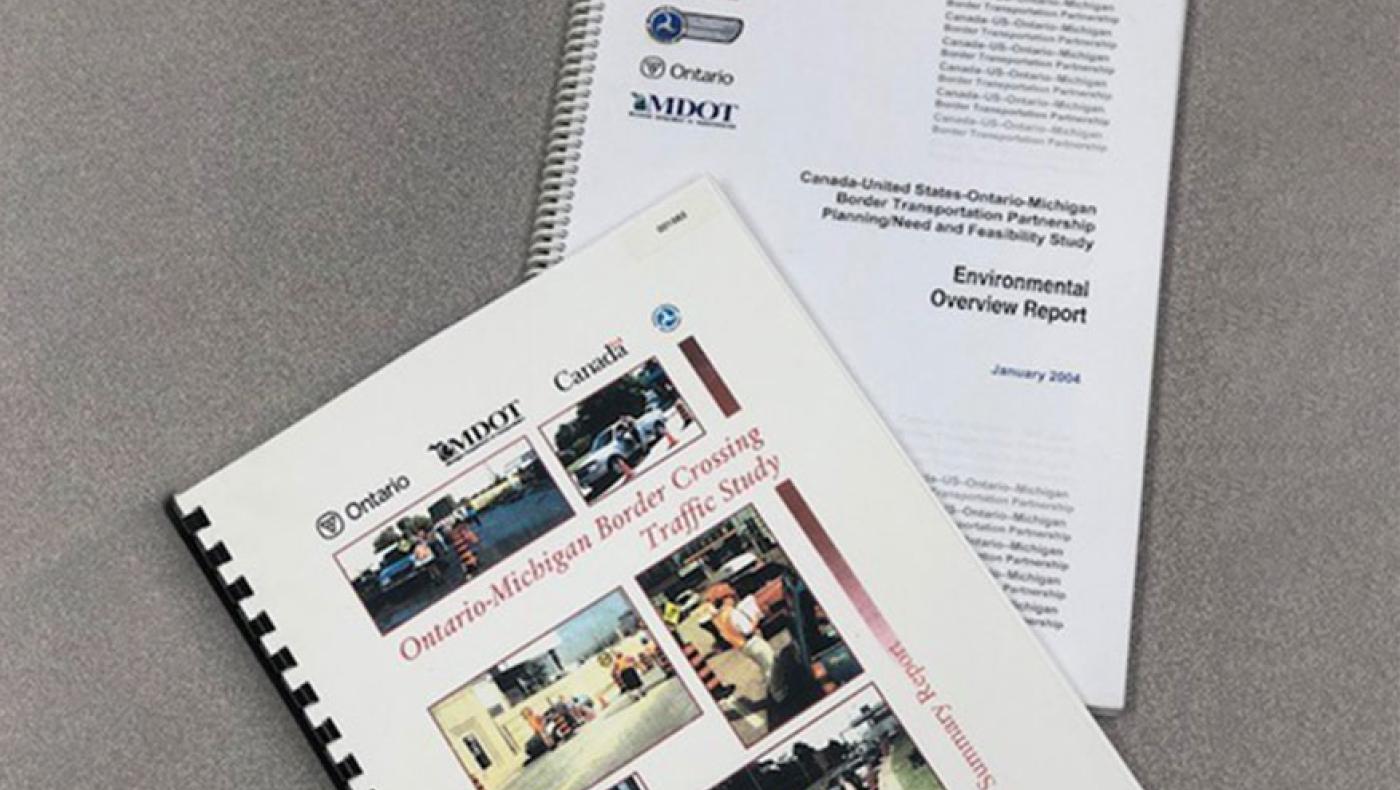
Cross Border Traffic Study
In response to industry and border stakeholder concerns that the existing Ontario-Michigan crossings would not support the anticipated increase in traffic, a study to collect origin destination patterns of cross-border trips was carried out by the Ontario Ministry of Transportation, Transport Canada, the Michigan Department of Transportation and the U.S. Federal Highway Administration, who formed the binational Border Transportation Partnership. The study was published in 2001 and included over 22,000 traveller surveys at four separate border crossings.
Planning Needs and Feasibility (PN/F) Study
Between 2001 and 2003 the binational partnership conducted the PN/F Study. The study identified a long-term strategy to meet the needs of the transportation network serving the border between Southeastern Michigan and Southwestern Ontario. Once completed, the technical working papers and reports developed over the study period were made available to government agencies and departments, municipalities, border stakeholders and the public for their comment and input. In 2004, the finalized PN/F Study, which recommended infrastructure projects to address border crossing deficiencies, was presented to Canadian, U.S., Ontario and Michigan senior government officials. The results of the study were then used to initiate formal environmental studies on both sides of the border which would ultimately lead to the recommendation of the new publicly owned Gordie Howe International Bridge.
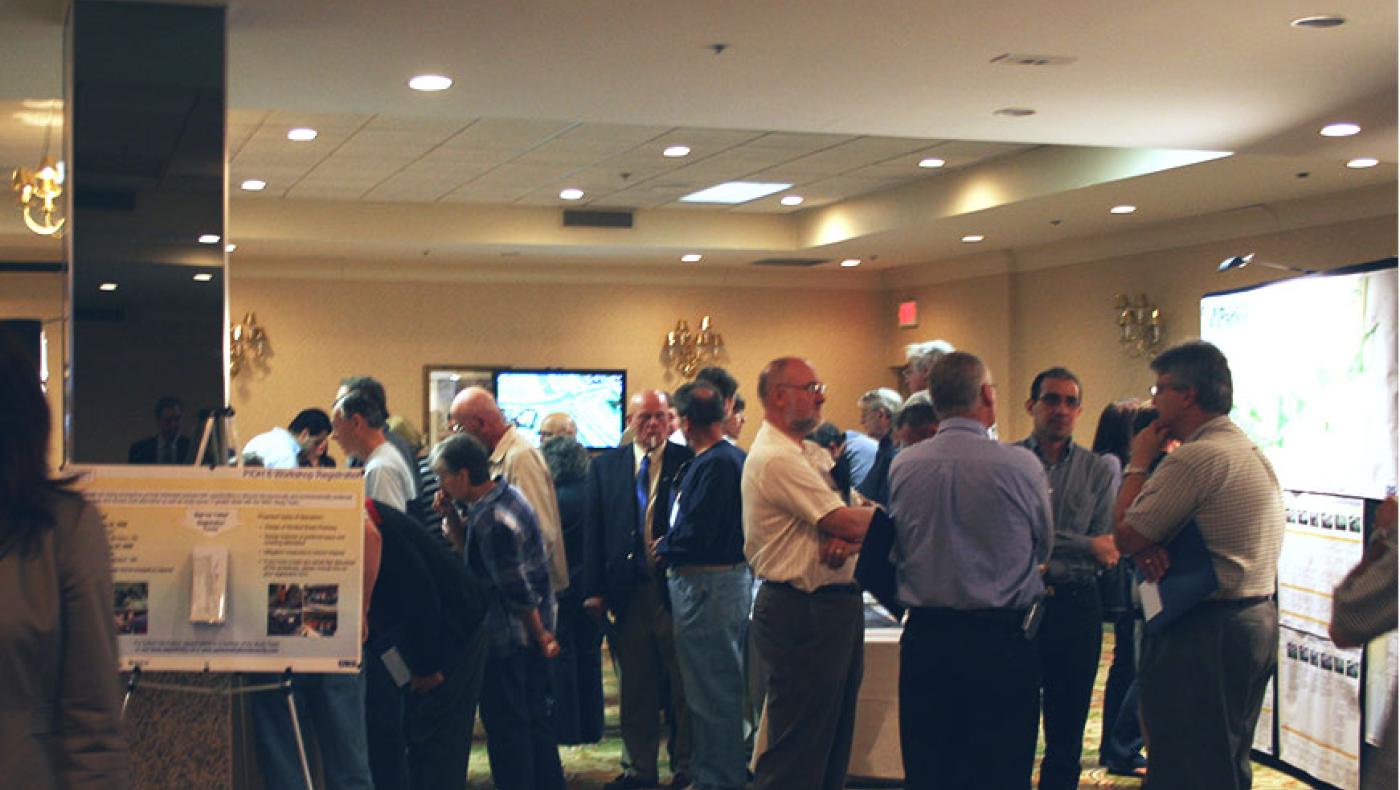
In 2005, a coordinated process that met the legislated requirements from governments on both sides of the border including the Ontario Environmental Assessment Act (OEAA) and the Canadian Environmental Assessment Act (CEAA) in Canada and the National Environmental Policy Act (NEPA) in the United States was developed. These separate pieces of legislation all require that the environmental study be thorough, open, transparent and fully accessible to the public for scrutiny and evaluation. The study team worked with the public, communities and interested groups on both sides of the border, to develop a solution that best met future transportation needs, while minimizing community impacts. A key principle of this process was that all affected and interested parties were given the opportunity to participate and offer input throughout the study. As a result, the study team held over 300 consultation meetings seeking community and stakeholder input at key points during the study.
Following four years of intensive study, in 2008, the partnership concluded its coordinated environmental study identifying the bridge and Ports of Entry locations on both sides of the border, the Ontario access road (now known as the Rt. Hon. Herb Gray Parkway), and the Michigan interchange connection as the technically and environmentally preferred alternative (TEPA).
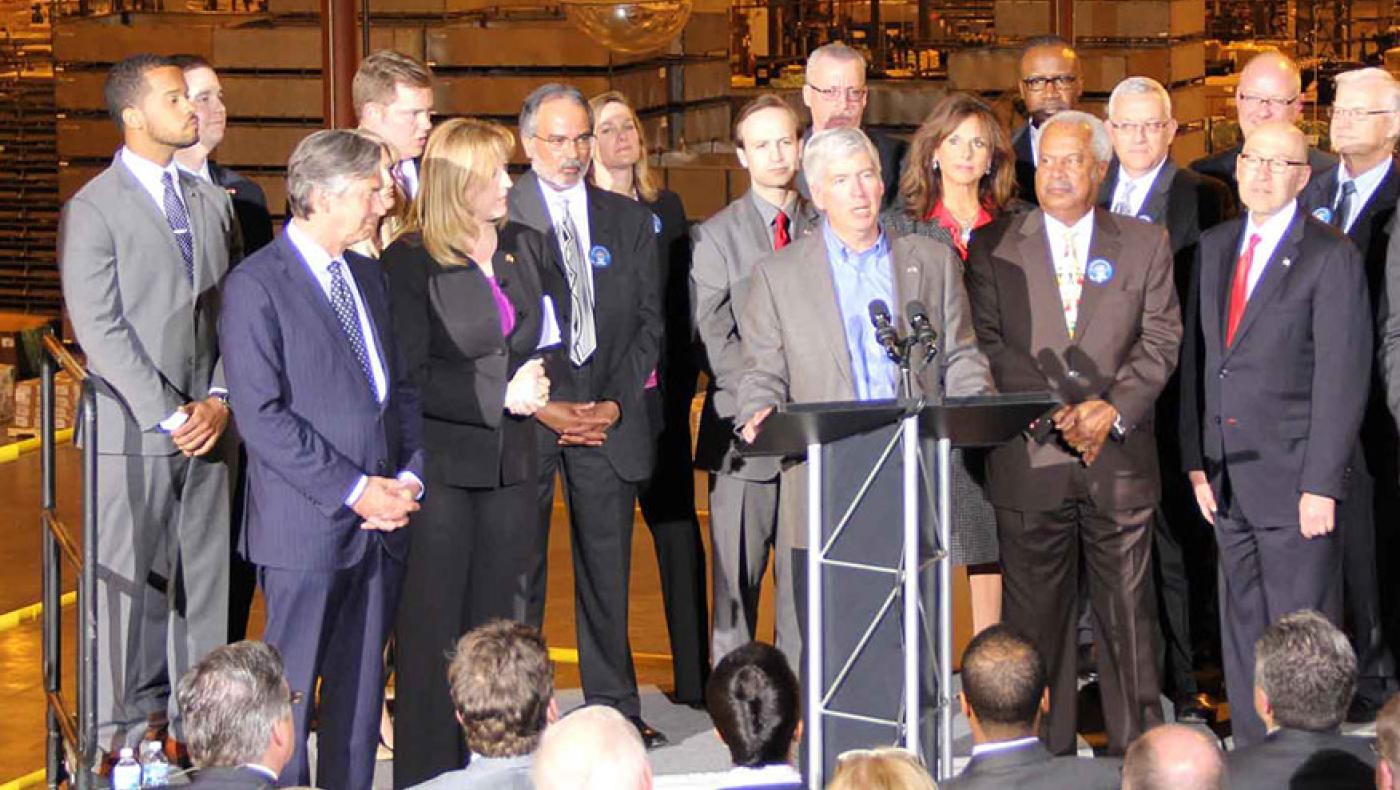
Approval of the Environmental Study in Canada and The United States
The binational partnership received environmental approvals to proceed with the new Windsor-Detroit border transportation system over the Detroit River: on January 15, 2009, under the National Environmental Policy Act (NEPA); on August 24, 2009, under the Ontario Environmental Assessment Act (OEAA); and on December 3, 2009, under the Canadian Environmental Assessment Act (CEAA).
Presidential Permit
On April 12, 2013, the U.S. State Department issued the Presidential Permit providing U.S. federal approval for the “construction, connection, operation, and maintenance” of the new publicly owned bridge linking Detroit and Windsor.
U.S. Coast Guard Permit
On May 30, 2014, the U.S. Coast Guard issued a Bridge Permit for the new publicly owned “International Bridge across the Detroit River between Detroit, Michigan and Windsor, Canada”. The navigational permit was the final key U.S. federal approval required for the U.S. portion of the project and approves the portion of the bridge to be constructed across waters under the jurisdiction of the United States.
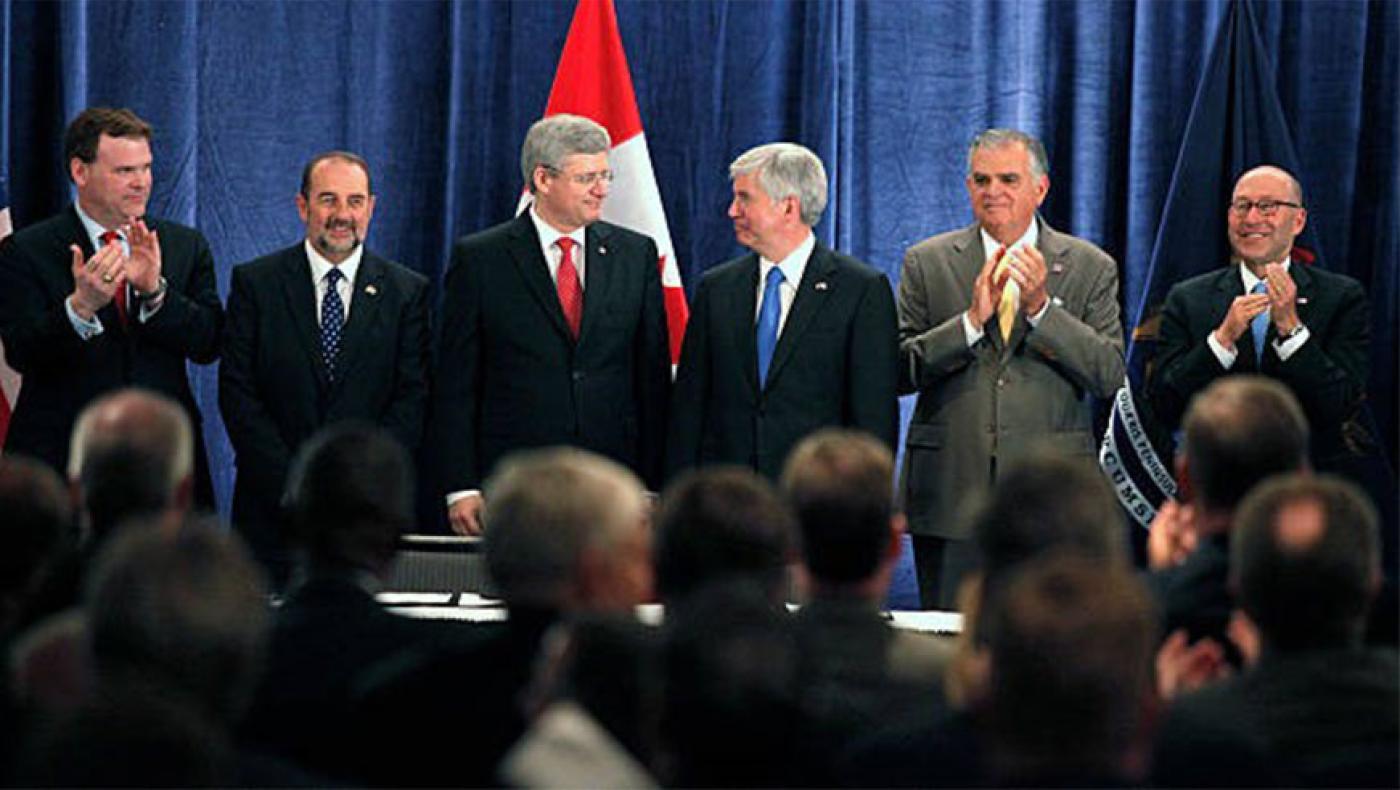
On June 15, 2012, the Prime Minister of Canada and the Governor of Michigan announced that they had concluded an agreement to enable the building of the new publicly owned Windsor-Detroit bridge crossing. The signing of the Crossing Agreement enabled Canada and Michigan to move the project forward to its next steps including further design work and property acquisition on the U.S. side. Under the agreement, Canada is responsible for constructing, financing and operating the new crossing through a public-private partnership. Further, the agreement stipulates that all iron and steel for any bridge component in Canada and for any component of the project in the United States will be sourced in either Canada or the United States. The agreement also stipulates that the crossing will be publicly owned, jointly with Canada and Michigan.
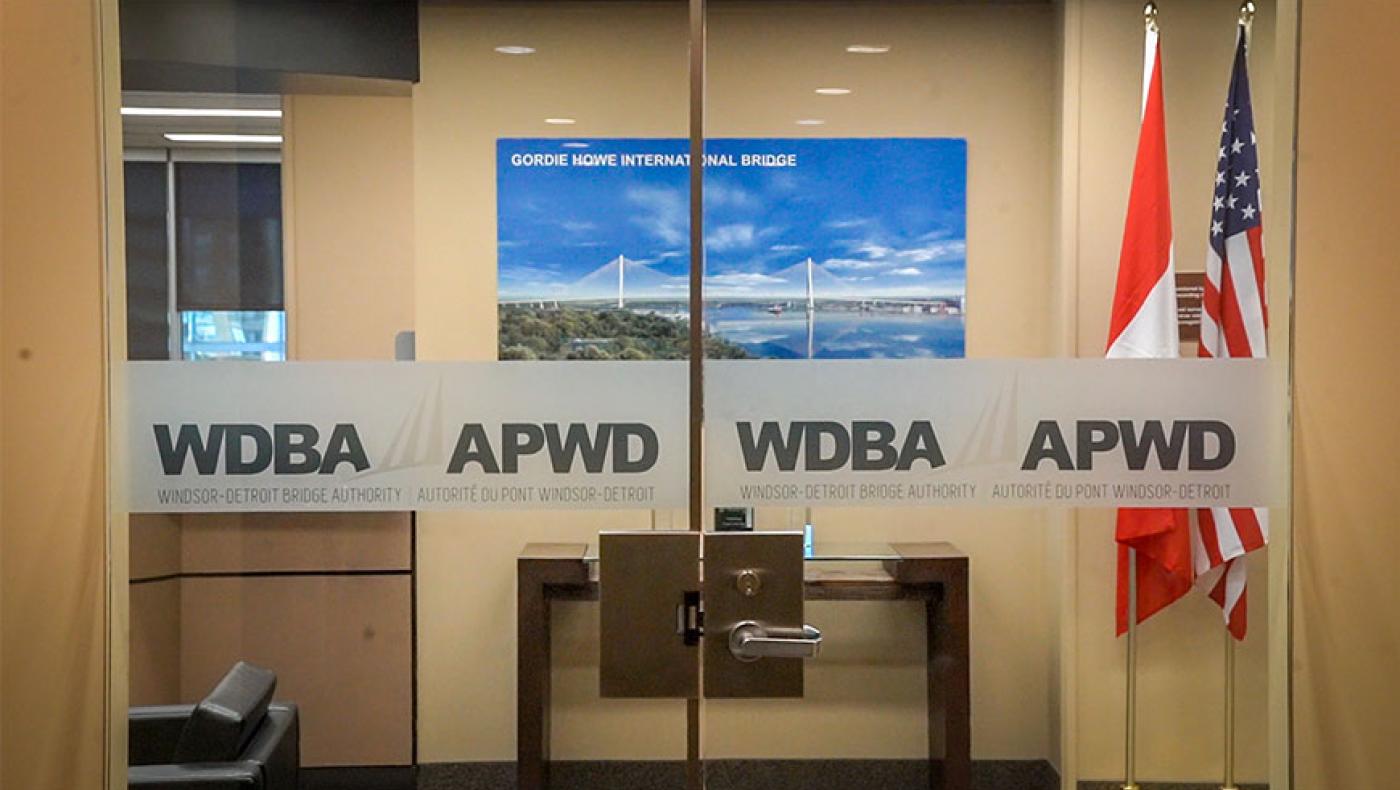
On July 30, 2014, Windsor-Detroit Bridge Authority (WDBA) started its first day of operations as the Crown corporation responsible for the delivery and operation of what will later be known as the Gordie Howe International Bridge. WDBA is led by a Chief Executive Officer and governed by a Board of Directors who are responsible for overseeing the organization's business activities and other affairs. The Crown corporation reports to Parliament through the Minister of Housing, Infrastructure and Communities and is located in Windsor, Ontario.
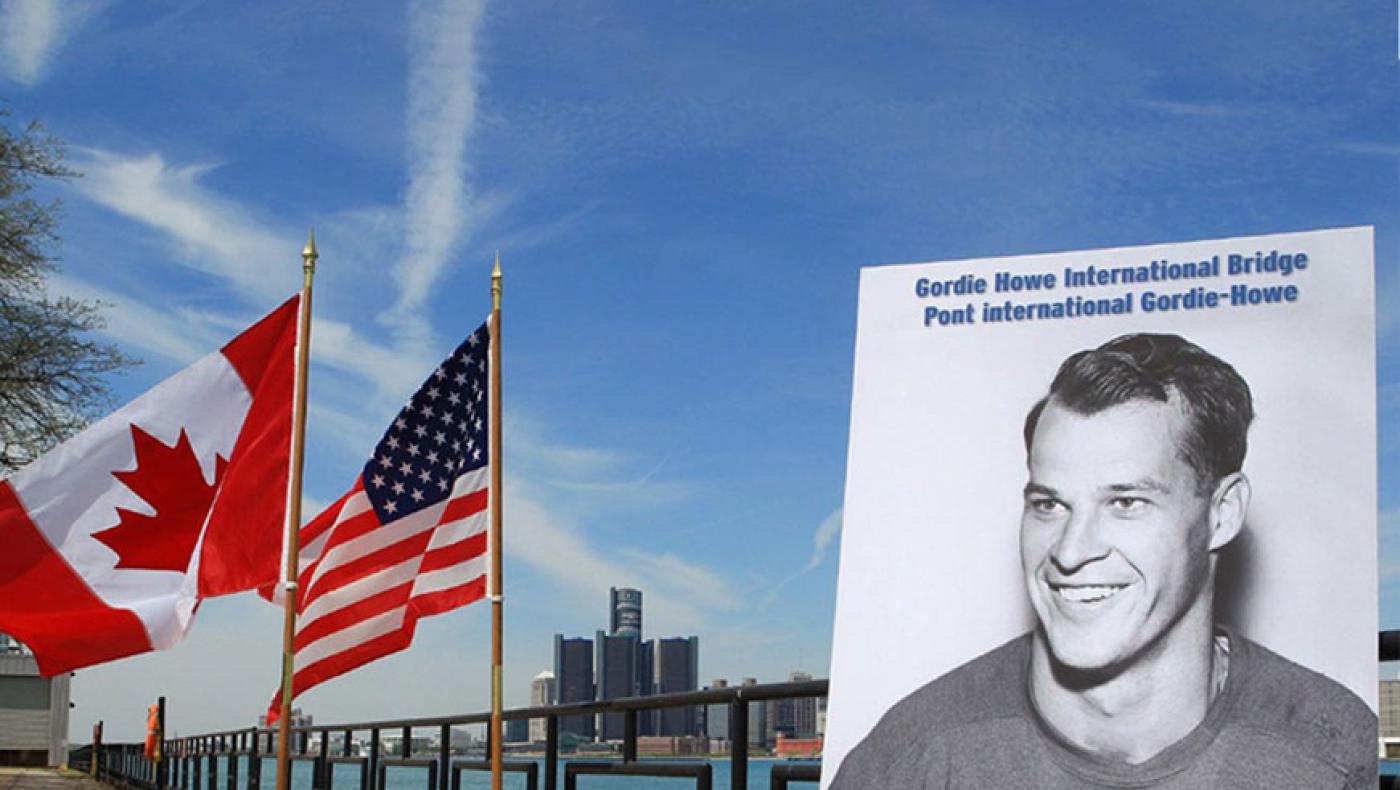
On May 14, 2015, the Prime Minister of Canada along with the Governor of Michigan announced that the publicly owned bridge between Windsor, Ontario, and Detroit, Michigan, will be named the Gordie Howe International Bridge in recognition of the legendary hockey player, a proud Canadian who led the Detroit Red Wings to four Stanley Cup victories.
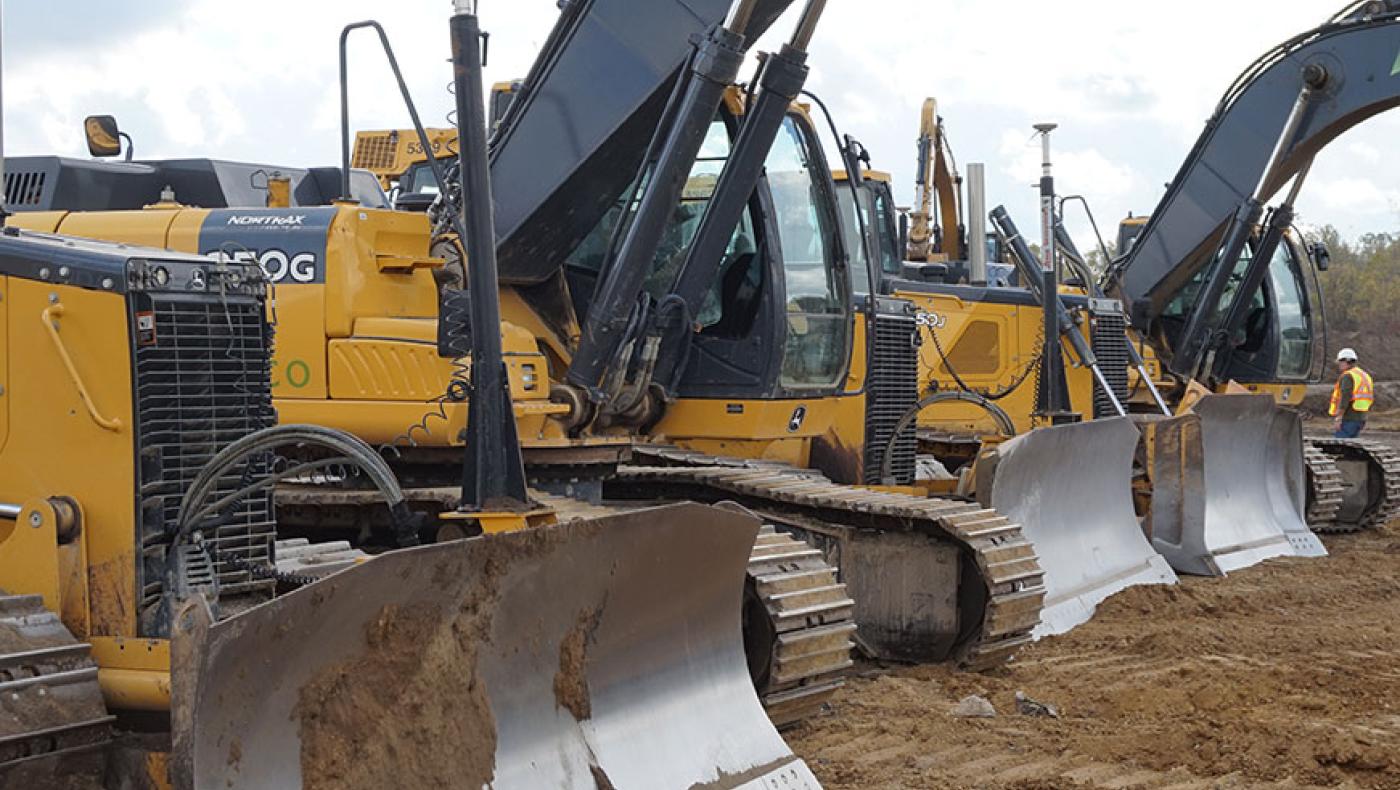
In June 2015, WDBA and its partners at the Michigan Department of Transportation (MDOT) started the acquisition process for properties required for the U.S. portion of the Gordie Howe International Bridge and the U.S. Port of Entry.
In October 2015, WDBA started preparatory activities on the sites of the Canadian and U.S. Ports of Entry (POE) to prepare the sites for the work to be undertaken by the private-sector partner. On the Canadian side, the work included the start of construction of a perimeter access road, utility relocation and the placement of fill, grading and drainage. On the U.S. side, the work included significant utility relocation.
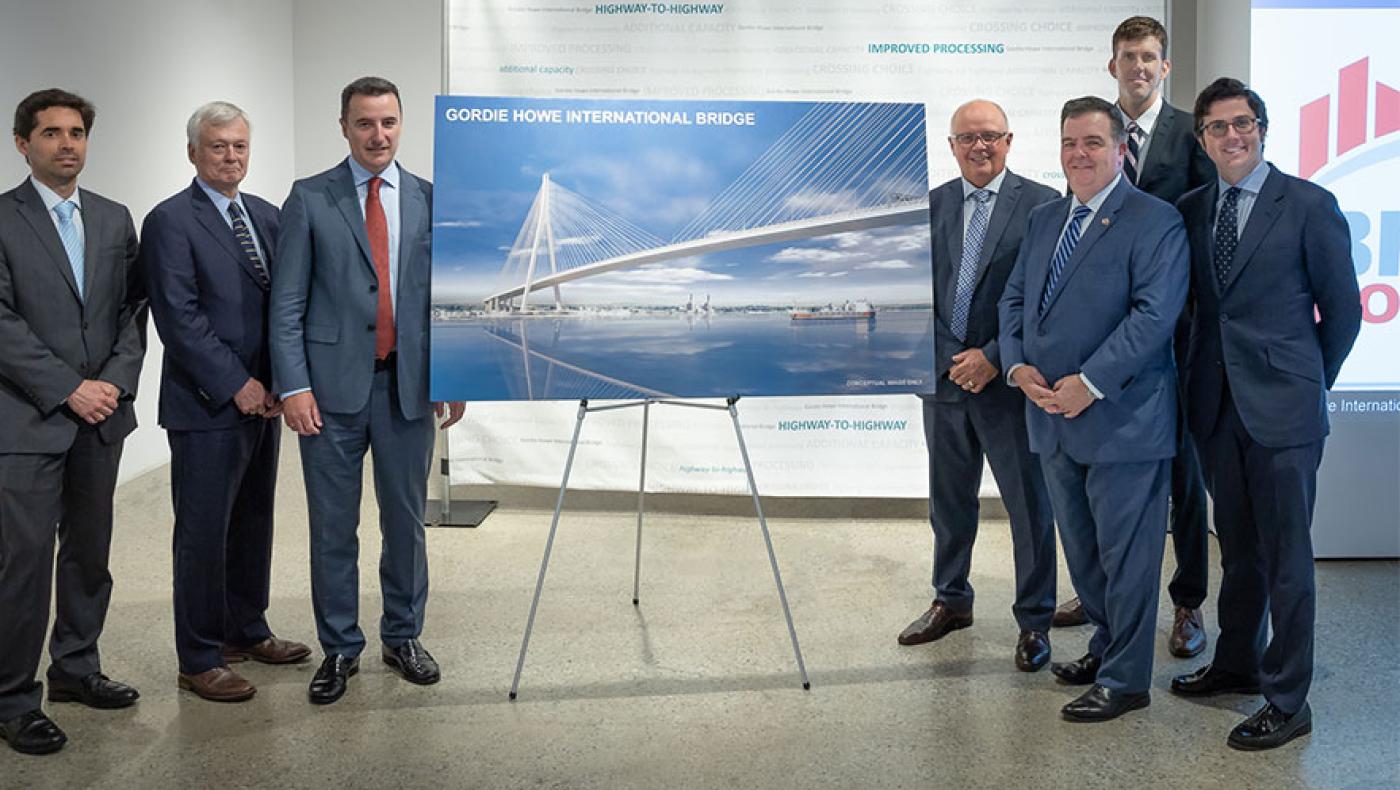
On July 20, 2015, Windsor-Detroit Bridge Authority announced the launch of the procurement process for the design, build, finance, operation and maintenance of the new Gordie Howe International Bridge. The first stage of the process is the Request for Qualifications (RFQ). The purpose of the RFQ is to pre-qualify teams to design, build, finance, operate and maintain the Gordie Howe International Bridge project.
On January 20, 2016, WDBA announced the names of the three Short-Listed Respondents that would move forward in the competitive procurement process to select a privatesector partner to deliver the Gordie Howe International Bridge project. With this announcement, the first of two stages in the P3 procurement process, the RFQ stage, was completed.
On November 10, 2016, WDBA announced the issuance of the Request for Proposals (RFP) to the Proponents. The RFP issuance launched the second stage of the P3 procurement process.
On July 5, 2018, WDBA announced that following a rigorous evaluation process, Bridging North America had been selected as the Preferred Proponent to design, build, finance, operate and maintain the Gordie Howe International Bridge project.
On September 28, 2018, WDBA announced that it had signed a $5.7 billion, fixed-priced contract with Bridging North America. The announcement signified that all contractual steps have been completed and construction can begin. Bridging North America has presented a 74-month construction schedule to complete the four components of the project with the bridge expected to be in service by the end of 2024.
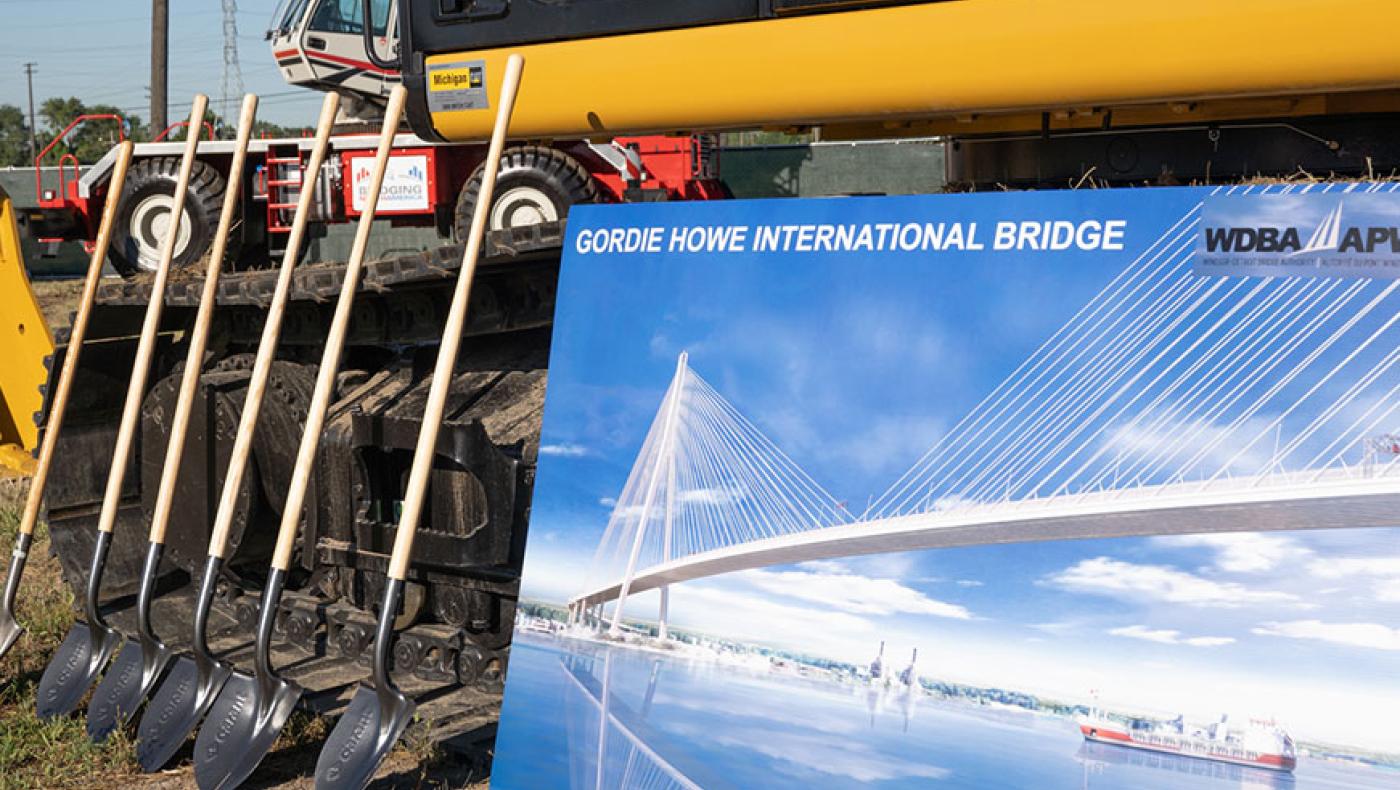
On July 17, 2018, WDBA and Bridging North America along with the State of Michigan and the Government of Canada, celebrated another significant milestone in the Gordie Howe International Bridge project with the start of Michigan advance construction.
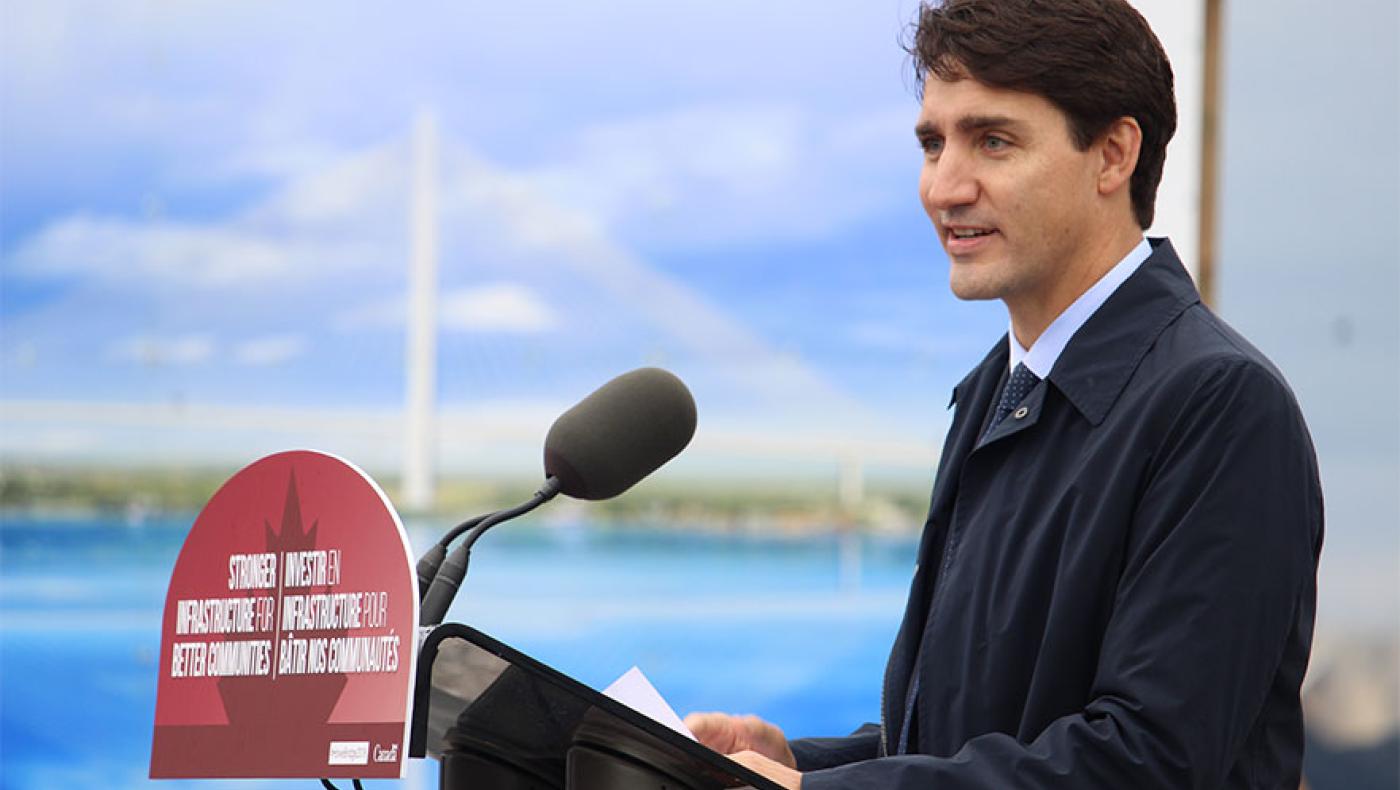
On October 5, 2018, WDBA and Bridging North America officials were joined by the Prime Minister of Canada, the Minister of Infrastructure and Communities and the Governor of Michigan to celebrate the official start of construction of the Gordie Howe International Bridge project.
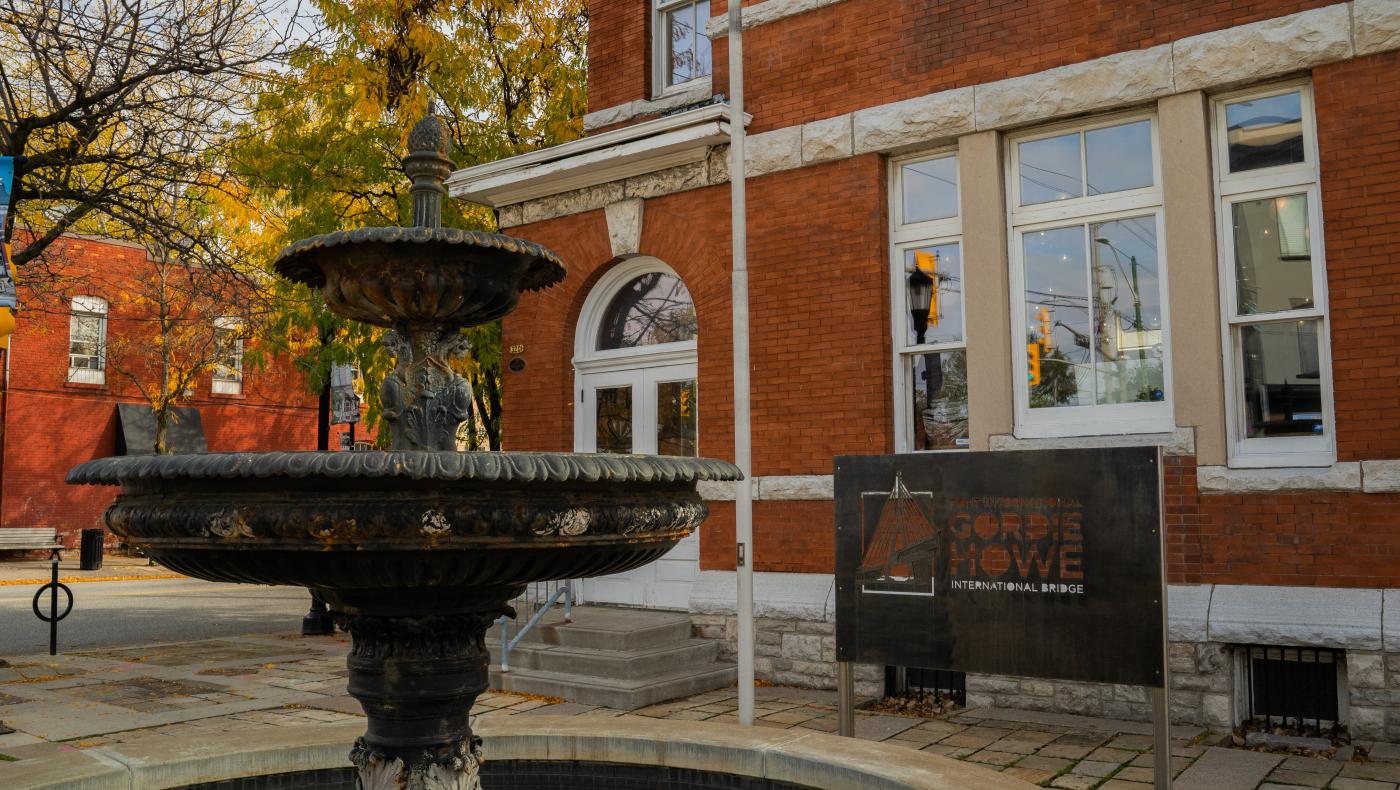
In March and August 2019, WDBA opened the doors to two new community offices, providing venues for members of the community and other stakeholders to meet with the Gordie Howe International Bridge project team, ask questions, view plans and gather project-related information.
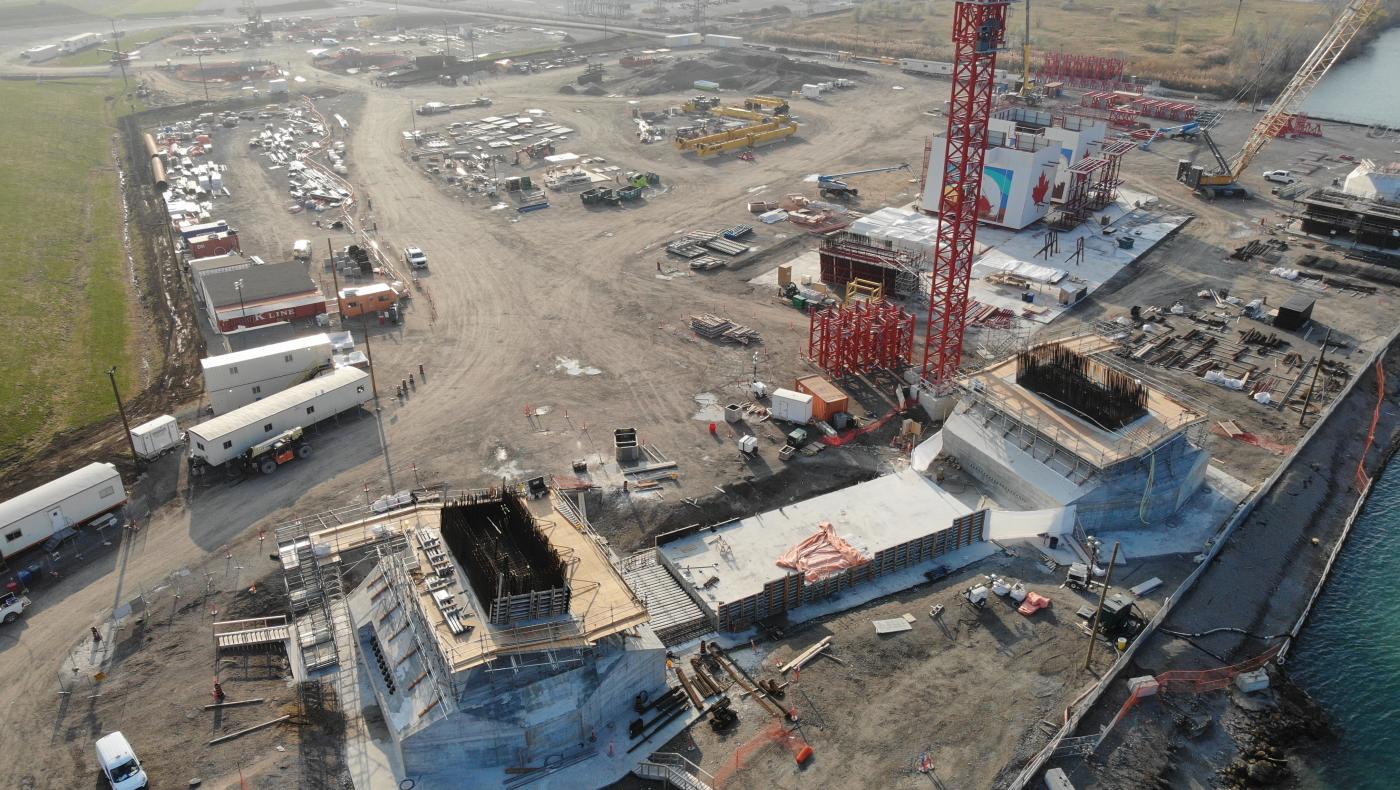
On January 9, 2020, after extensive community consultation, a design was selected for five pedestrian bridges being constructed as part of the Michigan Interchange (I-75) work. The pedestrian bridges will be located over I-75 in Detroit at Solvay Street, Beard Street, Waterman Street, Junction Street and Lansing Street. Construction of these bridges will take place between 2020 and 2024.
On November 27, 2020, the project team unveiled the results of partnership with artists from Walpole Island First Nation, Caldwell First Nation and Southwest Detroit in the form of murals that represent rich and diverse cultures displayed on the panels of the jump form systems. The jump form systems are temporary steel structures used to provide access for workers constructing the two massive towers supporting the bridge. As the towers grow to their final height of 220 metres/722 feet, so will the artwork, making them visible from land on both sides of the border and from the Detroit River.
In December 2020, the first of three phases of construction to create the distinctive towers for the Gordie Howe International Bridge was completed with the underground foundational work of the tower legs. With a solid structural base, crews could begin building the tower legs above ground to their final height of 220 metres/722 feet anticipated to be completed in 2023.
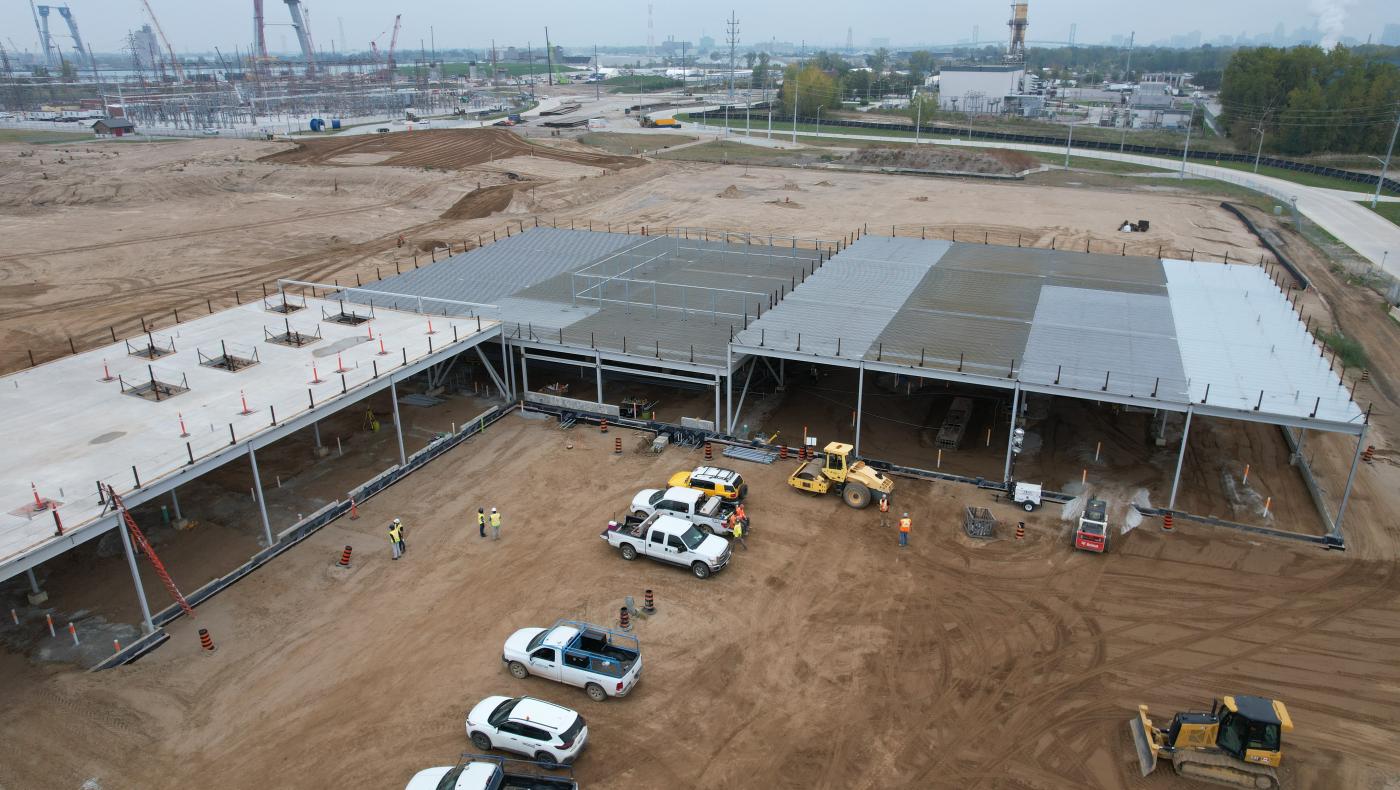
In March 2021, construction work began on the maintenance building, the first of eleven structures at the Canadian POE.
On July 1, 2021, the project team marked 1000 days since the start of construction. The community was engaged to celebrate through a commemorative ball cap giveaway.
In November 2021, construction work began on the commercial building, the first of 13 structures at the U.S. POE.
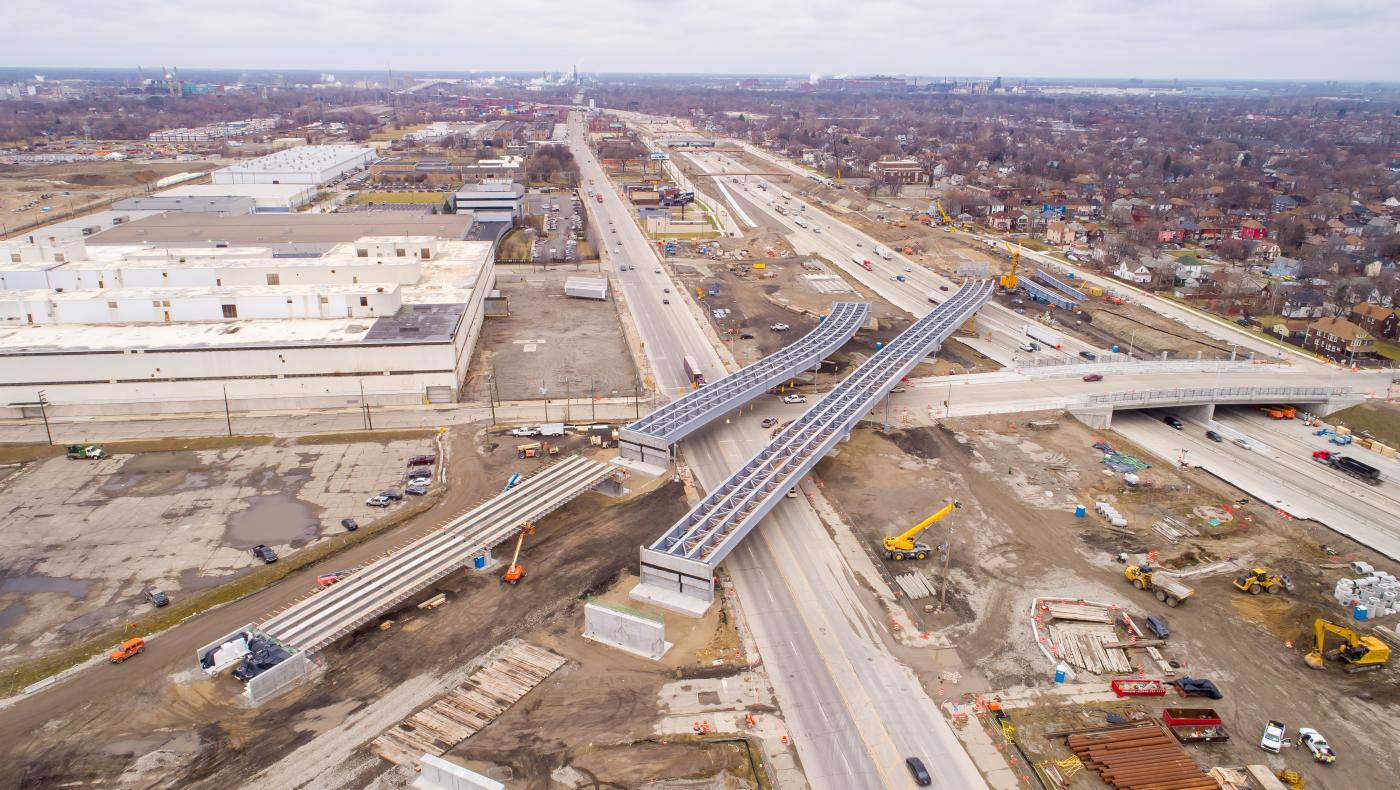
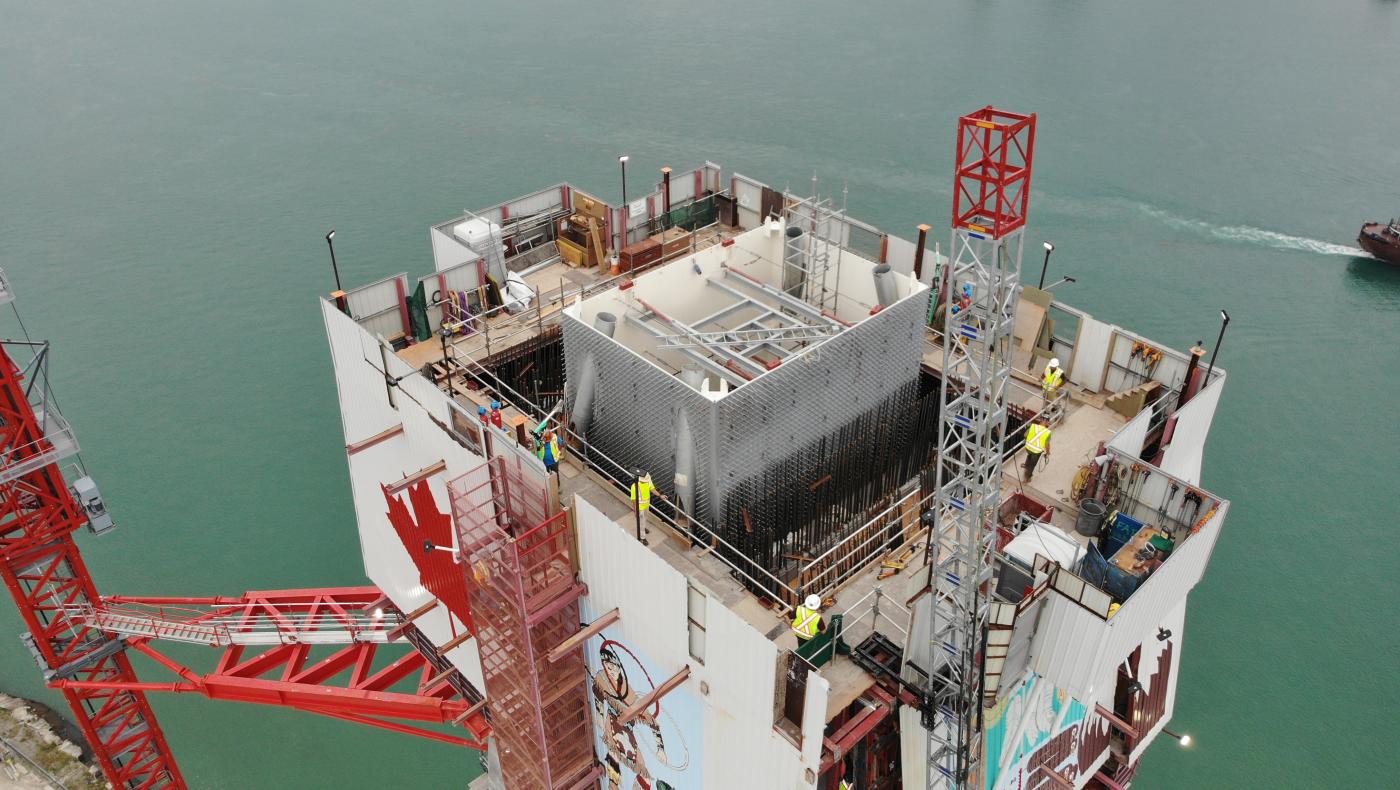
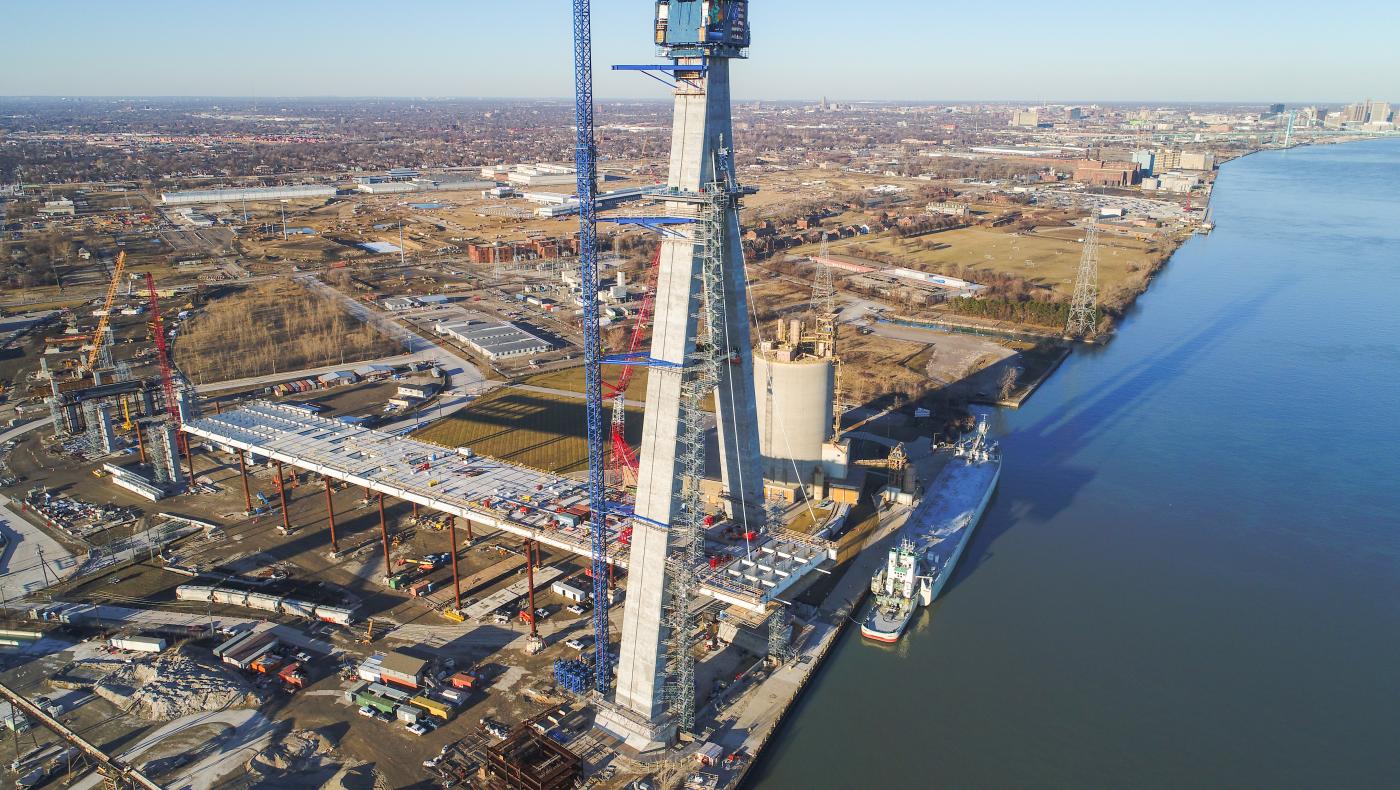
Ramp work connecting I-75 to the U.S. POE began in January 2022. Following substructure and preparatory activities, ramp girder installation started as well. The ramps are designed to minimize the impact of interstate/international traffic on roads in the vicinity of the POE.
In March 2022, phase two of the bridge tower legs construction was completed with the lower pylons reaching the height of 140 metres/460 feet and meeting to form the transition area. With the legs connected, work on the pylon head could begin.
In March 2022, construction on the road deck on both the Canadian and U.S. sides began. The road deck is the part of the bridge that is built above land. It includes the back span, the side span and the approach span.
In October 2022, site crews began installing anchor boxes into the bridge towers. Made of structural steel, the anchor boxes will house the stay cables that connect the towers to the bridge deck and road deck segments. In total, 70 boxes will be installed on the Canadian and U.S. towers, 35 on each side.
Construction started on the bridge deck began in December 2022. The bridge deck, known as the main span, is the part of the bridge that is built over water, located 42 metres/138 feet above the Detroit River. Starting from the towers in Windsor and Detroit, construction of the bridge will build outward toward the center of the river, one segment at a time, meeting in the middle.
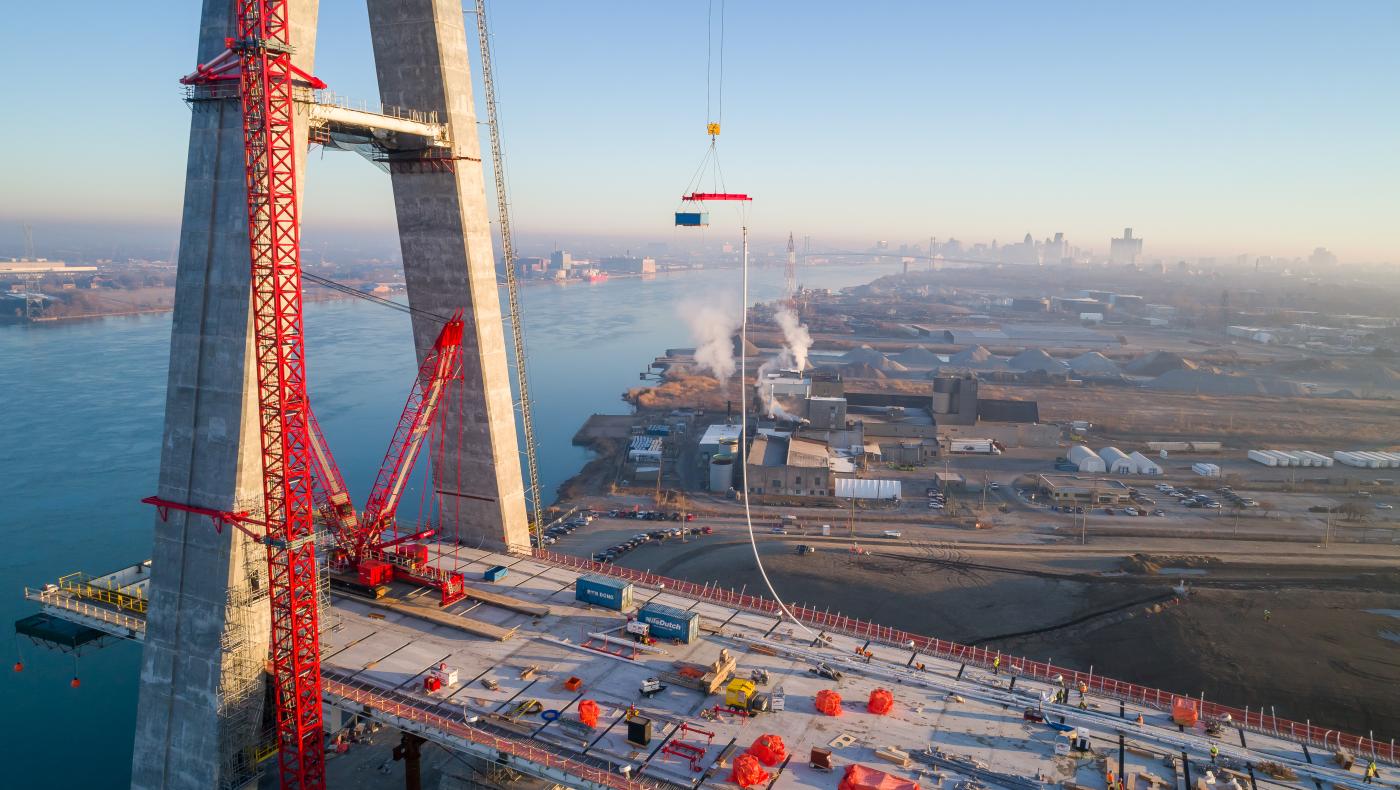
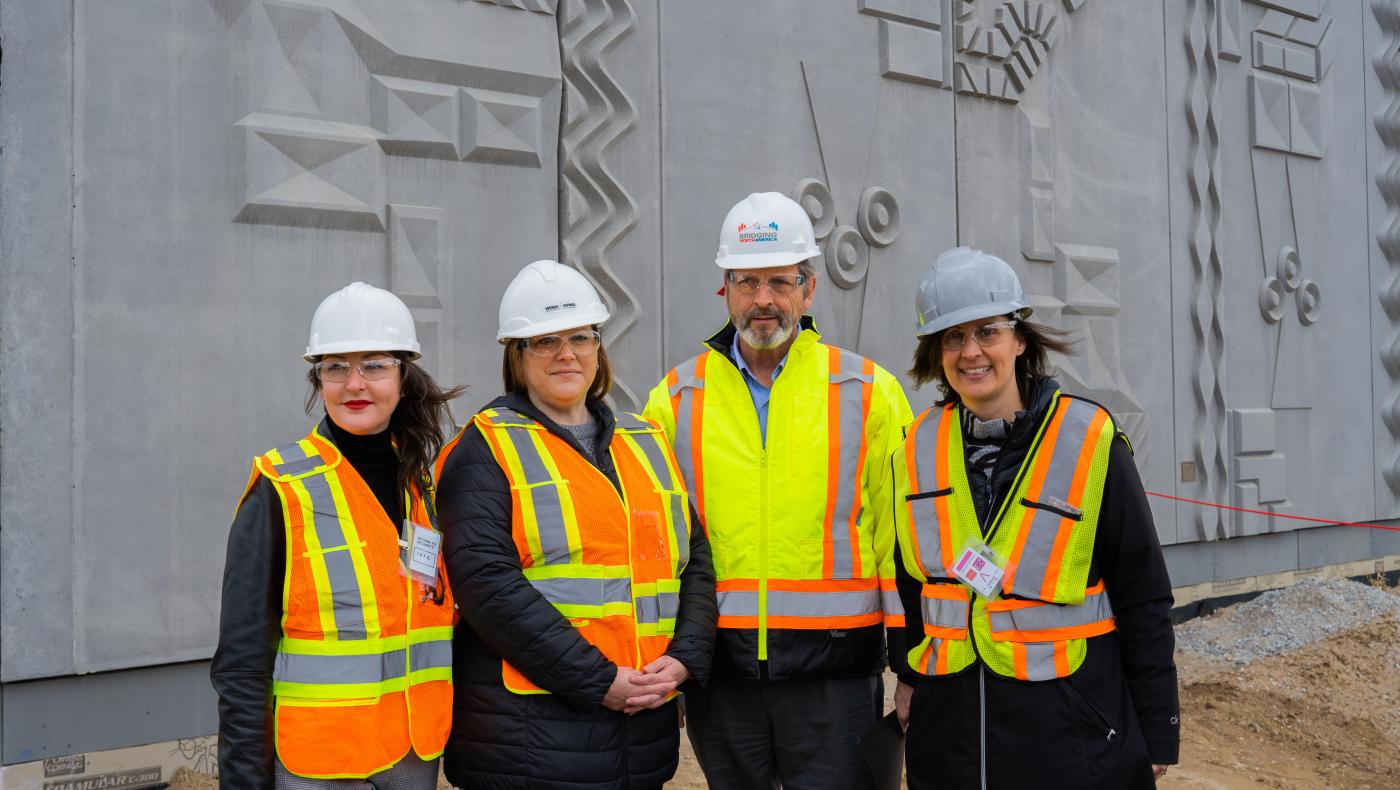
In January 2023, the stay cable installation began on both the U.S. and Canadian sides of the bridge. Integral to the design of the bridge, stay cables serve to deliver the weight of the entire structure to the tower and, through tension, maintain the bridge deck’s stability and placement.
On February 15, 2023, a new public art commission was unveiled at the Canadian POE, designed by Canadian artist Sara Graham. The commission, titled “On the Other Side of Tomorrow,” is integrated into the façade of the maintenance building and is composed of 22 stamped concrete panels, each reflecting the national and regional landscape. The inclusion of public art at the Canadian Port of Entry is an outcome of input received during the Detroit River International Crossing (DRIC) study.
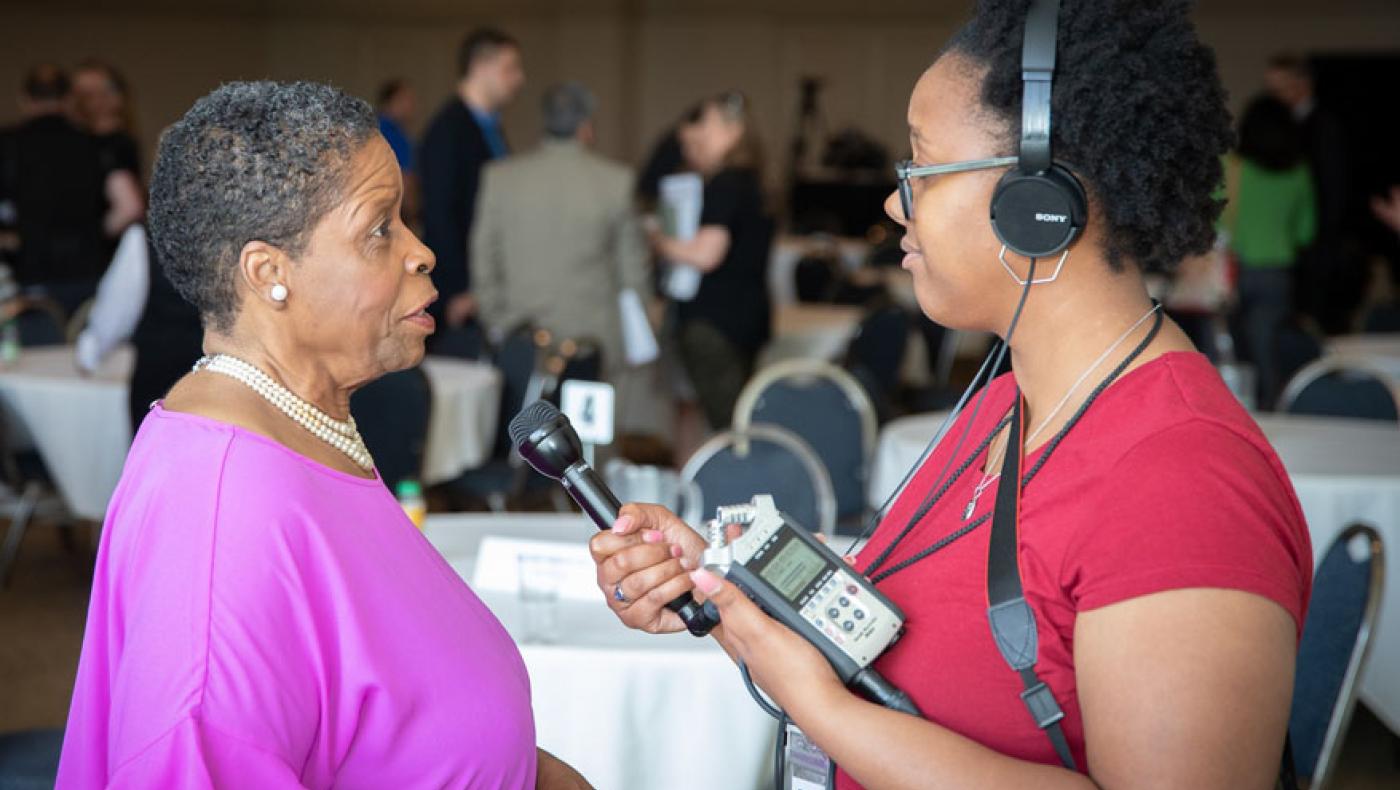
Bridging North America will facilitate and implement a comprehensive Community Benefits Plan that will be delivered in collaboration and coordination with WDBA and the State of Michigan. Bridging North America will be responsible for carrying out initiatives that integrate positive outcomes for the local workforce and neighbourhoods in Windsor and Detroit. These initiatives will take place on both sides of the border and will be implemented over the Gordie Howe International Bridge project design-build period.

